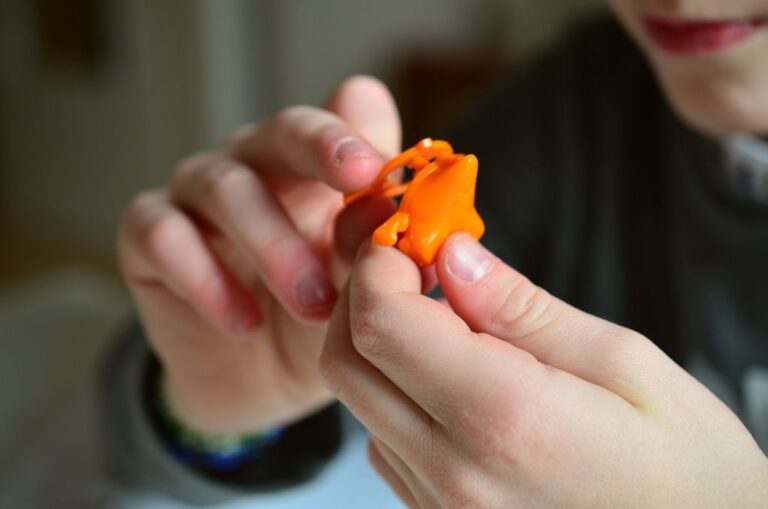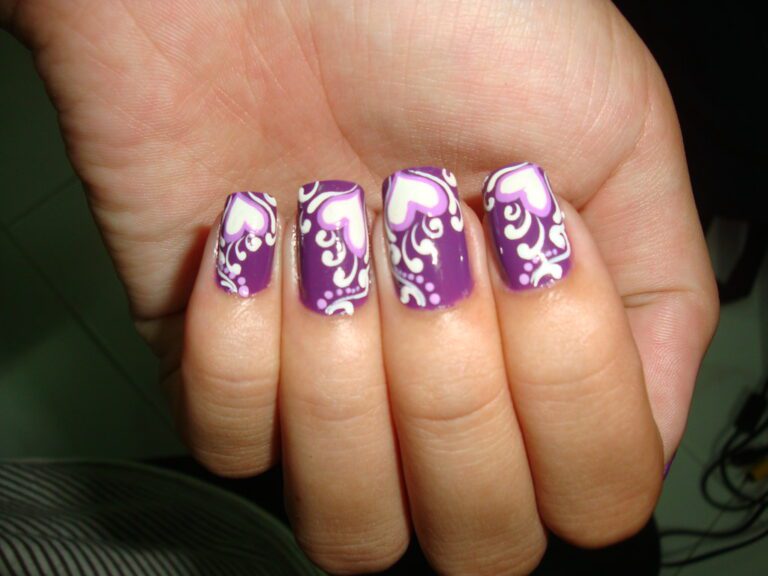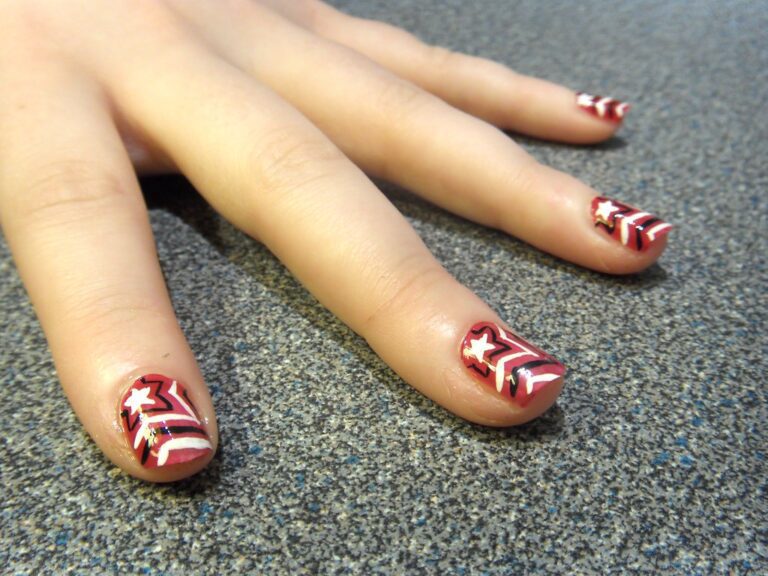“Picture-Perfect: What Nails to Use to Hang Pictures”
When it comes to hanging pictures, choosing the right nails is crucial for ensuring that your artwork is securely and safely displayed. This article explores the various aspects of nail selection, from understanding the weight of your artwork to techniques for securing pictures on different wall surfaces. Additionally, we’ll discuss the right tools for the job and provide creative hanging ideas beyond traditional nails.
Key Takeaways
- Assess the weight of your artwork to select the appropriate nails.
- Use standard nails for lightweight frames and heavy-duty options for large or heavy artwork.
- Essential tools for picture hanging include a stud finder and a level.
- Navigate different wall surfaces with specific techniques for hanging pictures.
- Consider adhesive strips and innovative hanging systems for nail-free solutions and art galleries.
Understanding the Weight of Your Artwork

Assessing Picture Weight for Proper Nail Selection
Before you hammer a single nail into your wall, it’s crucial to assess the weight of the picture you intend to hang. This step is not just about ensuring the nail can support the artwork, but also about preserving the integrity of your wall. Start by using a reliable scale to weigh your picture, then consult a weight rating chart for nails to find the appropriate size.
For a quick reference, here’s a basic guideline:
- Lightweight: Up to 5 pounds
- Medium-weight: 5 to 20 pounds
- Heavyweight: Over 20 pounds
Remember, the weight of the frame and any additional mounting hardware must be included in the total weight calculation. If your artwork falls between categories, it’s safer to opt for the heavier-duty option to ensure a secure hold.
Tip: Always distribute the weight evenly by using two nails spaced apart for wider frames. This not only balances the load but also helps to keep your picture level over time.
The Importance of Weight Distribution in Hanging Pictures
Proper weight distribution is crucial when hanging pictures, as it ensures that the artwork remains secure and level over time. Uneven weight distribution can lead to a variety of issues, including stress on the hanging hardware and potential damage to both the wall and the frame. To avoid these problems, it’s important to use the right combination of nails and hanging techniques.
Assess the weight of your picture and choose a nail that can comfortably support it. For larger frames, consider using multiple nails spaced evenly across the width of the frame. This spreads the load and reduces the risk of warping or strain. Here’s a simple guideline to follow:
- Use one nail for pictures up to 5 pounds.
- Two nails for pictures between 5 to 10 pounds, spaced evenly.
- Three or more nails for pictures over 10 pounds, depending on width and weight.
Tip: Always check the manufacturer’s recommendations for weight limits on hanging hardware to ensure safety and longevity of your artwork display.
Types of Nails and Their Uses

Standard Nails for Lightweight Frames
When selecting nails for lightweight frames, it’s important to consider the weight distribution and the overall sturdiness of the nail. The Everbilt 1-1/2 in. Zinc-Plated Common Nails (75-Pack) is a great option for lightweight frames. Here’s a quick overview of this nail type:
| Nail Type | Package Quantity | Product Weight (lb.) | Returnable | Shank Type |
|---|---|---|---|---|
| Common Nail | 75 | 0.25 lb | 90-Day | Smooth |
For best results, ensure that the nail is securely fastened to the wall and provides adequate support for the frame. Remember to use the appropriate tools for installation and always follow safety guidelines when handling nails.
Tip: To prevent damage to the frame and the wall, use a level to ensure the frame is hung straight and secure.
Bracing Nails for Medium-Weight Pieces
When it comes to hanging medium-weight pieces, such as larger framed photos or small mirrors, bracing nails provide the necessary support without compromising your wall. These nails typically have a thicker shaft and a more pronounced head, ensuring that they can bear the weight of your artwork more effectively than standard nails.
For optimal results, consider the following points:
- Select the appropriate size of bracing nail for your piece, taking into account both the weight and the type of frame.
- Ensure that the nail is driven into a wall stud, if possible, for added stability.
- Use a level to confirm that the nail is perfectly horizontal before hanging your artwork.
Tip: Always check the manufacturer’s guidelines for the recommended weight limit of the bracing nails you intend to use. This will prevent damage to both your wall and your artwork.
Heavy-Duty Options for Large or Heavy Artwork
When it comes to hanging large or heavy artwork, the stakes are high, and the need for heavy-duty hardware is paramount. Standard nails simply won’t suffice for pieces that weigh more than a few pounds. Instead, one should consider using specialized picture hangers designed to support substantial weight.
Anchor bolts and toggle bolts are excellent choices for these types of tasks. Anchor bolts can be secured into wall studs, providing a stable foundation for heavy frames. Toggle bolts, on the other hand, are suitable for hollow walls where they expand behind the surface to distribute weight evenly.
Here’s a quick guide to help you select the right hardware:
- Anchor Bolts: Best for direct stud mounting.
- Toggle Bolts: Ideal for hollow walls without studs.
- Molly Bolts: For plaster or drywall, offering strong hold.
Tip: Always ensure that the hardware you choose can support at least twice the weight of your artwork to provide a safety margin.
Remember, the correct installation of these heavy-duty options will not only keep your artwork securely in place but also help prevent damage to your walls. Take the time to locate studs and measure accurately to ensure your artwork hangs beautifully and safely for years to come.
The Right Tools for the Job

Essential Tools for Picture Hanging
When it comes to hanging pictures, having the right tools is essential for a secure and professional result. A few essential tools to have on hand include a measuring tape, level, laser level, picture hanging strips, anchors and screws, and command hooks. These tools will ensure that your artwork is hung accurately and securely, enhancing the overall aesthetic of your space. Additionally, using a stud finder can help locate the most secure points for hanging heavier pieces. Remember, the right tools make all the difference in achieving picture perfection.
When to Use a Stud Finder
A stud finder is an indispensable tool when hanging heavier frames or when you need to ensure your artwork stays securely on the wall. It’s particularly crucial when you’re not using a heavy-duty hanging method that can distribute the weight across a larger area, such as a French cleat.
- Use a stud finder when hanging anything over 10 pounds.
- It’s also wise to use one if the wall material is prone to damage, like drywall or plaster.
- For lighter items, you may not need a stud finder, but it’s always better to err on the side of caution.
Tip: Always mark the edges of the stud and find the center for the most secure anchor point. This reduces the risk of the nail or screw pulling out over time due to weight and gravity.
The Role of a Level in Achieving Picture Perfection
When hanging pictures, achieving the perfect alignment is crucial for a visually appealing display. Using a level ensures that the artwork is perfectly straight and balanced. It’s important to take the time to adjust the position of the picture until it aligns perfectly with the level indicator. This precision contributes to the overall aesthetic and professional presentation of the artwork. Additionally, a level helps in maintaining consistency when hanging multiple pictures in a gallery-style arrangement.
- Implement a table for presenting structured, quantitative data. Ensure it’s succinct and formatted correctly in Markdown.
- Use a bulleted or numbered list for less structured content, like steps, qualitative points, or a series of related items.
Remember to check the level at multiple points along the picture to ensure uniform alignment. This attention to detail will elevate the visual impact of your displayed artwork.
Techniques for Securing Pictures on Different Wall Surfaces

Hanging Pictures on Drywall
When hanging pictures on drywall, it’s important to consider the weight of the artwork and choose the appropriate nails for secure installation. Drywall is a common wall surface in many homes, and it requires careful handling to ensure that the pictures are safely and securely hung. To achieve this, consider using the following techniques:
- Use anchors for added support, especially for heavier frames.
- Locate the studs for maximum stability and weight distribution.
- Consider the use of picture hanging kits for precise and secure placement.
Remember, the key to successful picture hanging on drywall is to prioritize safety and stability to prevent any damage to the wall or the artwork.
Tip: When using anchors, ensure they are compatible with drywall and capable of supporting the weight of the artwork.
Navigating Plaster Walls: Tips and Tricks
Plaster walls can be tricky to work with when hanging pictures. Unlike drywall, plaster is harder and more brittle, making it essential to use the correct technique to avoid damage. Start by pre-drilling a hole using a drill bit that is slightly smaller than the nail or screw you intend to use. This will help prevent the plaster from cracking.
When selecting a fastener for plaster walls, consider using a picture hook that comes with a special hardened nail designed for plaster. These nails are often blue-treated or made of hardened steel to penetrate the wall without causing cracks. For heavier frames, it’s advisable to locate a stud behind the plaster and secure the picture to it.
- Use a stud finder to locate studs behind the plaster.
- Mark the spot where you will hang your picture with a pencil.
- Pre-drill a hole at the marked spot.
- Gently tap the specialized nail or screw into the pre-drilled hole.
Tip: If you’re unsure about the integrity of the plaster or the weight of the picture, consider using anchor bolts or toggle bolts for added security. These expand behind the wall, distributing the weight more evenly and reducing the risk of damage.
Securing Artwork on Brick or Concrete
Hanging artwork on brick or concrete walls requires a different approach compared to drywall or plaster. The hardness of these materials means that standard nails are not sufficient, and a more robust solution is needed.
Drill anchors or masonry nails are typically used for these surfaces. Drill anchors work by expanding within a pre-drilled hole to grip the wall securely, while masonry nails are made of hardened steel and can be hammered directly into the wall without bending.
- Drill Anchors: Pre-drill hole, insert anchor, and screw in the hanger.
- Masonry Nails: Hammer directly into the wall at the desired location.
Tip: When working with brick or concrete, always wear safety goggles to protect your eyes from flying debris.
For those seeking a less permanent solution, picture rail systems offer a versatile and damage-free option. These systems allow for easy adjustments and repositioning of artwork without the need to drill new holes.
Longevity and Care for Hung Pictures

Preventing Picture Sagging Over Time
Preventing picture sagging over time is crucial for maintaining the integrity of your artwork. To ensure long-lasting support, it’s important to use the right nails and hanging techniques. Consider the weight of your artwork and choose nails that can adequately support it. Additionally, regularly inspect the condition of the nails and make any necessary adjustments to prevent sagging. Implementing a maintenance schedule for your hung pictures can help preserve their condition for years to come.
Maintaining Wall Integrity with Proper Nail Use
Maintaining the integrity of your walls while hanging pictures is crucial to both the appearance and the structure of your space. Using the correct nails not only secures your artwork but also ensures that the walls remain undamaged over time. It’s important to consider the surface type and the weight of the picture when selecting nails.
For instance, softer wall materials like drywall require different nails compared to harder surfaces like brick or concrete. On drywall, using a nail that is too large can cause unnecessary damage, while a nail that is too small may not hold the weight of the picture, leading to potential falls and further wall damage.
Proper nail use involves more than just the right size and type; it also includes the technique of hammering and the location of the nail. Here are some tips to keep in mind:
- Ensure the nail is hammered in at the correct angle, typically 45 degrees, to provide optimal support.
- Avoid overcrowding a single area with multiple nails, as this can weaken the wall structure.
- Consider the use of wall anchors or picture hangers for heavier items to distribute the weight evenly.
Tip: Regularly check the firmness of the nails and the stability of the hung pictures to prevent any long-term damage or sagging.
Creative Hanging Ideas Beyond Nails

Adhesive Strips: A Nail-Free Solution
For those seeking a nail-free option for hanging pictures, adhesive strips offer a versatile and easy-to-use solution. These strips are designed to firmly adhere to your wall and the back of your frame, providing a clean look without the need for nails or tools.
Assessing the adhesive strength is crucial when selecting the right strip for your artwork. For example, Command Large Picture Hanging Strips can hold frames up to 16 lbs, making them suitable for a range of sizes. It’s important to follow the manufacturer’s instructions for the best results.
Here’s a quick guide to some popular adhesive strip options:
- Unibond No More Nails Removable Picture Hanging Strips are ideal for temporary displays and rental properties.
- Command strips are a reliable choice for a damage-free hanging experience.
- JELLYSUB strips provide a heavy-duty option with water-resistant properties.
- KINCMAX wall adhesives are known for their strong, waterproof, and heavy-duty characteristics.
Tip: Always clean the wall surface before applying adhesive strips to ensure maximum stickiness and longevity.
Innovative Hanging Systems for Art Galleries
Art galleries have long since evolved from the traditional nail and hook approach, embracing more sophisticated and versatile hanging systems. These systems offer a dynamic display environment, allowing for easy rearrangement and rotation of artwork without the need for constant wall repairs.
Gallery hanging systems typically consist of a track mounted to the ceiling or high on the wall, from which cables or rods suspend. This design provides a clean and modern look while ensuring the safety and security of the displayed pieces. The flexibility of these systems is particularly beneficial in galleries where exhibits change frequently.
- Track-based systems
- Cable or rod hangers
- Adjustable hooks
Tip: Always consider the weight capacity and compatibility of the hanging system with your artwork to prevent damage.
Innovative systems like the Original Gallery System Steel Cable and Newly’s Alopsys offer tailored solutions that cater to the unique challenges of displaying art. Whether dealing with a stairway, sloped ceiling, or the desire for a ‘floating’ aesthetic, these systems provide the necessary adaptability and ease of use.
Looking for creative hanging ideas beyond nails? Look no further! At NAILinspire.com, we’ve got a wide range of innovative hanging solutions that will inspire and elevate your space. From adhesive hooks to decorative hangers, our collection has everything you need to showcase your creativity. Visit NAILinspire.com today and discover the ultimate online nail art design library.
Frequently Asked Questions
What type of nail should I use for hanging lightweight frames?
For lightweight frames, it’s best to use standard nails that can support the weight without damaging the wall.
How can I prevent picture sagging over time?
To prevent picture sagging, make sure to use the appropriate nail for the weight of the artwork and periodically check for any signs of sagging.
Are adhesive strips a reliable alternative to nails for hanging pictures?
Adhesive strips can be a nail-free solution for hanging pictures, especially for lightweight artwork. However, they may not be suitable for heavier pieces.
When should I use a stud finder for hanging pictures?
A stud finder is useful when you want to locate the wall studs for secure and stable picture hanging, especially for heavier artwork.
What are some innovative hanging systems for art galleries?
Art galleries often use innovative hanging systems that provide flexibility and ease of rearranging artwork without the need for nails or traditional hanging methods.
What role does a level play in achieving picture perfection?
A level is essential for ensuring that your pictures are hung straight and aligned, adding to the visual appeal of your display.






